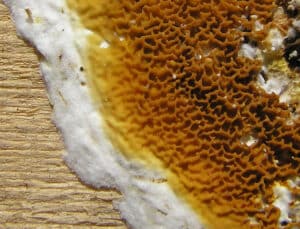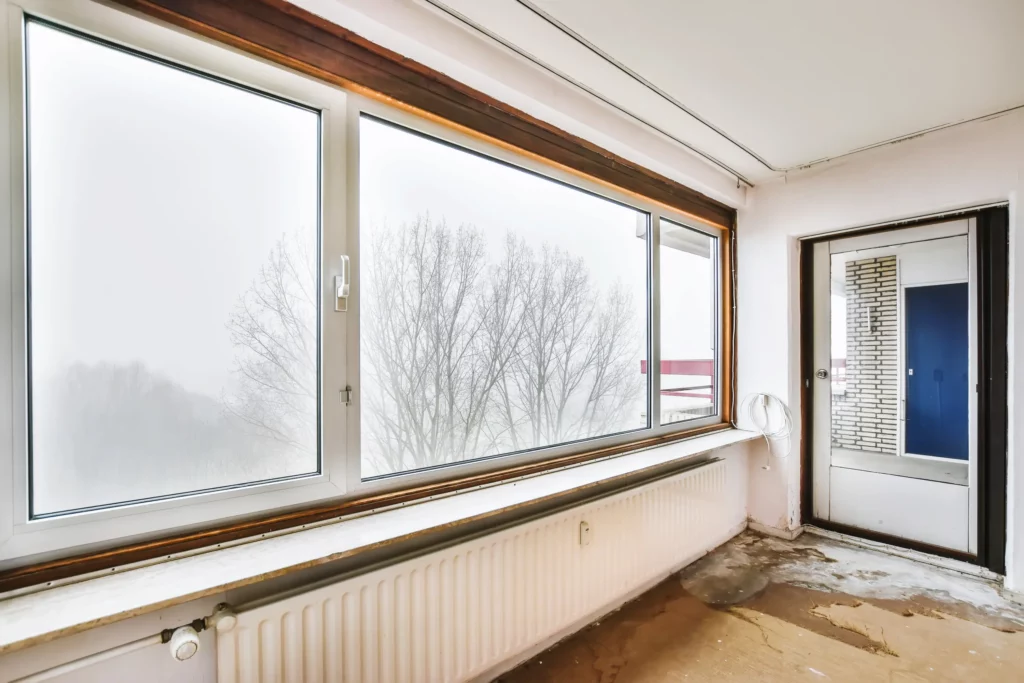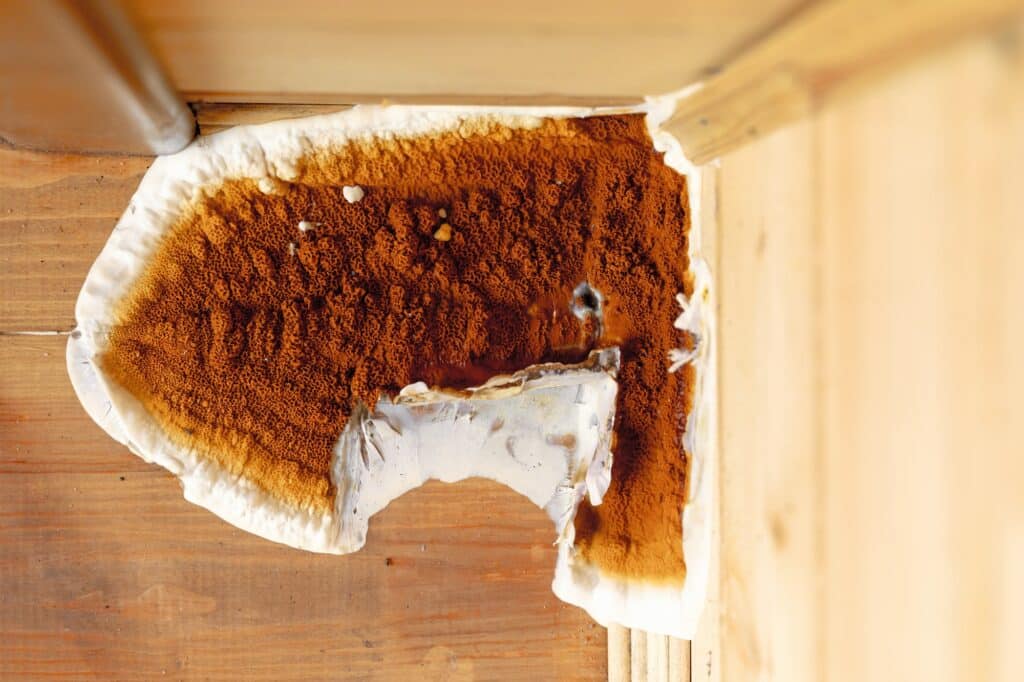
2011 10 27 serpula lacrymans cropped
When it comes to housing, we often hear about merula. This fungus can be particularly devastating. But what is it really? What impact does it have on health? How does it develop? Find out more in this article.
What is merula?
Merula is also known as “dry rot fungus”. This wood-eating fungus can cause major damage to wooden structures. It attacks houses. The fungus feeds on the cellulose present in the wood. The wood then becomes brittle. This causes it to decompose.
It spreads rapidly in dark, damp areas. The areas most often affected are
- Basements ;
- Attics;
- Poorly ventilated bathrooms.
There are signs of infestation that can be observed:
- Black mould stains on wood;
- Musty smells;
- Areas of softened or crumbly wood.
Damage is expensive to repair. It can even compromise the structure of a building. This is the case if treatment is not carried out as soon as possible.
Is merula dangerous to health?
This fungus poses no direct danger to human health. However, its spores can be allergenic. Some people are particularly sensitive to them. They can aggravate pre-existing respiratory problems such as asthma.
The presence of merula in a house is often linked to a damp problem. If left untreated, this can encourage the growth of other moulds. These are harmful to health.
How does mould develop?
This fungus thrives in damp environments. Here are some of the factors that encourage its development:
- Water leaks ;
- Moisture seepage;
- Excessive condensation;
- Drainage problems.
It should be noted that poor ventilation encourages the accumulation of moisture. Poorly ventilated areas are particularly vulnerable. They are ideal for the growth of mérule. This fungus particularly likes an ambient temperature of between 20 and 30°C.
Untreated wood also favours its development. Treatments should generally be applied to wooden furniture. Finally, the presence of cardboard, paper and plaster is conducive to the proliferation of merula. It feeds on the cellulose present in these materials.
In short: prevent the development of merula!
First and foremost, find out if this fungus is present in your neighbourhood. Knowing that spores are airborne, your home could easily become infected. If this is the case, consider treating the wood in your home. Especially furniture and structures. Pay particular attention to exterior doors and windows.
You also need to control the humidity inside. Wood that is 20% damp is enough for merula to develop. To do this, renew the indoor air with good ventilation. In winter, limit the temperature at which the house is heated. All these precautions will help you maintain a healthy environment.







About The Author: Web
More posts by web